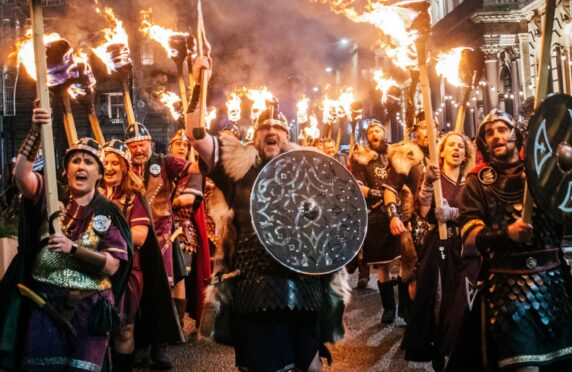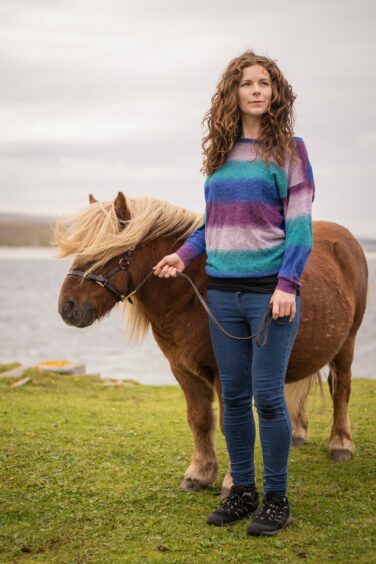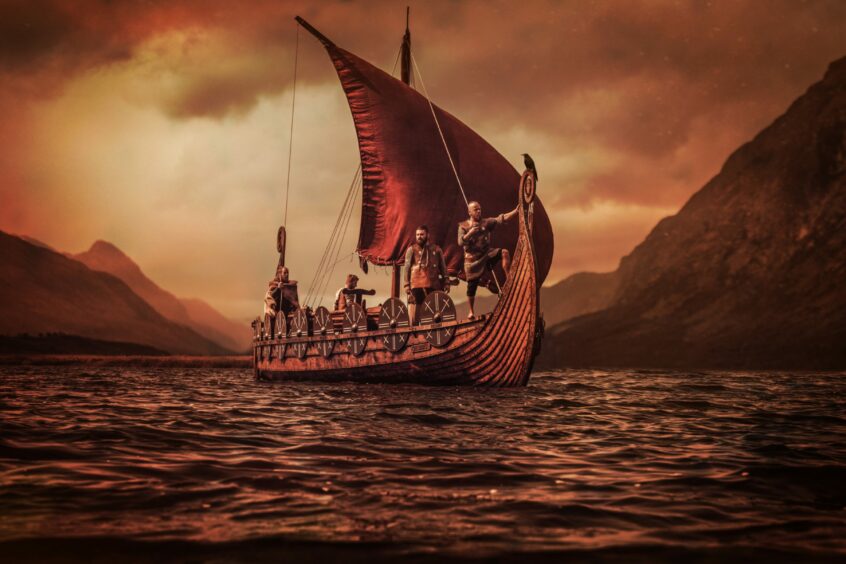
Shetland’s iconic ponies almost certainly come from little Viking horses brought to the islands by the Norse invaders, according to researchers.
A report by Norwegian anthropologists suggests this the marauding invaders favoured small horses because they were easier to fit on board longships.
The scientists, who are studying what the Vikings brought to Britain’s shores, say that they likely arrived with one or two small horses on each boat.
The smaller Norse horses took up much less space than modern breeds, according to professor Jan Bill, professor of Viking Age Archaeology at the Museum of Cultural History, Oslo.
Researchers found key evidence for their theory in the remains of horses discovered in Viking burial mounds on mainland Britain.
Horses are thought to have first arrived in Shetland by crossing massive ice fields at the end of the last ice age, around the same time that woolly mammoths still roamed the Earth.
It is possible that these eventually bred with smaller breeds brought there by invaders.
In a report published by Science Norway, Bill said: “The Viking-era horses were not the size of most horses today.”
He also believes that the invading Vikings also brought horses and pigs to Britain in the 9th Century.
He said: “It’s perfectly reasonable that it was possible in the 860s or 870s.”
The leading Norwegian Viking cultural expert has discovered burial mounds of an army in Derbyshire where warriors were interred with their small horses in the 9th Century. This was around the same time the Norse were settling in Shetland, where there is a legacy of Norse culture, most famously in the spectacular Up Helly Aa fire festival.
The Vikings arrived on Shetland and Orkney in longships 45 to 80 feet long with more than 100 men on board.
Shetland pony researcher and anthropologist Dr Catherine Munro says the small Norse horses would have boosted the stock on the islands keeping the species small.
Munro, a human-animal relationship researcher on the northern isles, said: “It is entirely possible that small Norse horses added to those already on Shetland keeping the breed small.
“They would be a perfect entrance to the gene pool on size. Small horses thrive better on a windswept Shetland landscape and would have been perfect for the hard work needed.
“They are small, stocky horses able to pull carts with heavy loads and work on Viking settlements.
“The Shetland pony is similar with genetic links to those on Iceland – also colonised by Norse settlers from 9th Century.”
Not only the horses bred on our northern islands but research in the scientific journal Nature, shows an overall Scandinavian ancestry of 44% for Shetland and 30% for Orkney’s people.
There are equal contributions from Scandinavian men and women for both island groups.
With small horses came people and the first Scottish settler on Iceland was a woman called Aud the Deep-Minded, who sailed there with her Viking husband.
Studies into Icelandic DNA show many of the people there descended from Viking men and Scottish women.
Munro, author of Ponies At The Edge Of The World, says the small horses were better equipped to survive the harsh northern isles winters because they were small enough to snuck into hillside shelters.
“Small horses with thick coats have better protection in harsh weather than sleeker ones.”
Shetland was owned by Norway until around 1470 when it came with a dowry with Margaret of Norway.
Although the Vikings and their horses were burned after death, the Oslo team examined chemicals (strontium isotopes) in what was left of the charred remains.
Strontium is an element found all over the world, but in different varieties or blends. These variants are called isotopes.
People take it in with water, vegetables and plants and, if you grow up in one place, you absorb the isotopic mixture found there. If you move to another place, you slowly start to absorb the mixture that is in the food there.

Enjoy the convenience of having The Sunday Post delivered as a digital ePaper straight to your smartphone, tablet or computer.
Subscribe for only £5.49 a month and enjoy all the benefits of the printed paper as a digital replica.
Subscribe
 © Shutterstock / Nejron Photo
© Shutterstock / Nejron Photo